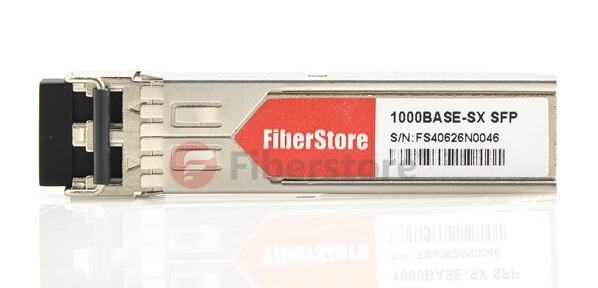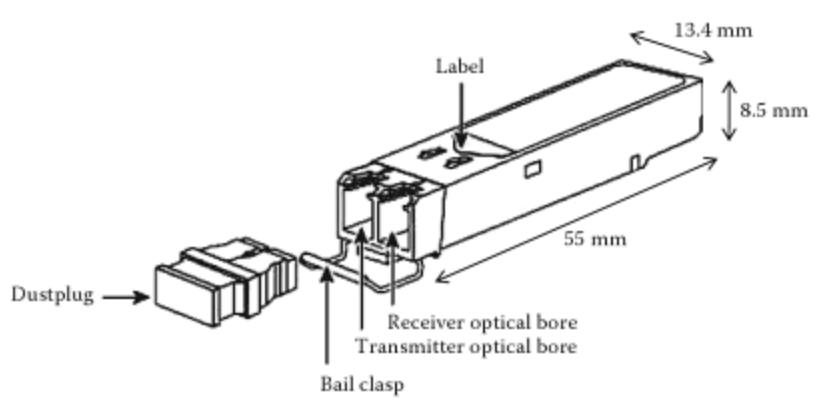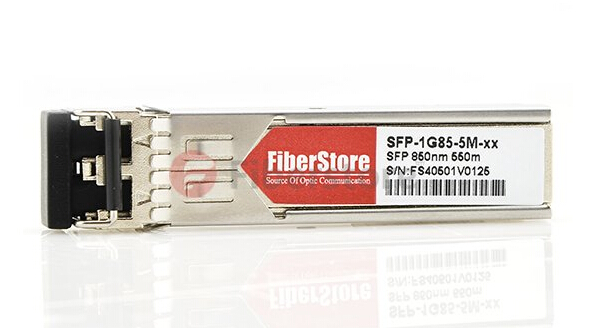Introduction of Gigabit Ethernet
Gigabit Ethernet uses the same 802.3 frame format as 10Mbps and 100Mbps Ethernet systems. This runs at ten times the clock speed of Fast Ethernet, backward compatibility is assured with earlier versions, increasing its attractiveness by offering a high bandwidth connectivity system to the Ethernet family of devices.
Gigabit Ethernet is defined by the IEEE 802.3z standard. This defines the gigabit Ethernet media access control (MAC) layer functionality as well as three different physical layers: 1000Base-LX and 1000Base-SX using fibre and 1000Base-CX using copper. These physical layers were originally developed by IBM for the ANSI Fibre Channel systems and used 8B/10B encoding to reduce the bandwidth required to send high-speed signals. The IEEE merged the fibre channel to the Ethernet MAC using a gigabit media independent interface (GMII), which defines an electrical interface, enabling existing fibre channel PHY chips to be used and enabling future physical layers to be easily added.
1000Base-SX for Horizontal Fibre
1000Base-SX, also known as 1000Base-SX, is a physical layer specification for Gigabit Ethernet over fibre optic cabling as defined in IEEE 802.3z. SX stands for short wavelength. And 1000Base-SX uses short wavelength laser (850nm) over multimode fibre as opposed to 1000Base-LX, which uses long wavelength laser over both multimode and single-mode fibre. The maximum distance of (multimode) fibre, based on 1000Base SX is 550m.
This gigabit Ethernet version was developed for the short backbone connections of the horizontal network wiring. The SX systems operate full-duplex with multimode fibre only, using the cheaper 850nm wavelength laser diodes. The maximum distance supported varies between 200 and 550 meters depending on the bandwidth and attenuation of the fibre optic cable used. The standard 1000Base-SX NICs available today are full-duplex and incorporate LC fibre connectors.

1000BASE-SX SFP Optical Module Selection Raiders
SFP module is a hot-swappable input/output device that plugs into a Gigabit Ethernet port/slot, linking the port with the fibre-optic network. SFPs can be used and interchanged on a wide variety of Cisco products and can be intermixed in combinations of IEEE 802.3z compliant 1000BaseSX interfaces on a port-by-port basis.
1000BASE-SX SFP supports link length of up to 550m (depending on fibre type) on multimode fibre at 1Gbps. This optic works at 850nm wavelength and uses a LC connector.
If you want to purchase cheaper compatible 1000Base-SX SFP modules online, Fiberstore may be the better choice. Fiberstore is the largest fibre optics manufacturer of China, which offers various of SFP modules. And you will find third-party optical modules provided by fiberstore, like HP J4858b, J4858C, Jd118b and Netgear agm731f also Cisco GLC-SX-MM, etc.
Compatible SFP transceiver modules offered by Fiberstore are third-party and fully compatible with major brands (Cisco, HP, NETGEAR, Juniper, etc.) and supported by a Lifetime Warranty. Besides the compatible SFP, we can also customize SFP transceiver modules to fit customers’ specific requirements. Contact us by live chat or mails if you could not find the exact items you need.
New product launching in Fiberstore: 24 Fibers Optical Splice Tray for FHD Fiber Enclosure – FS


